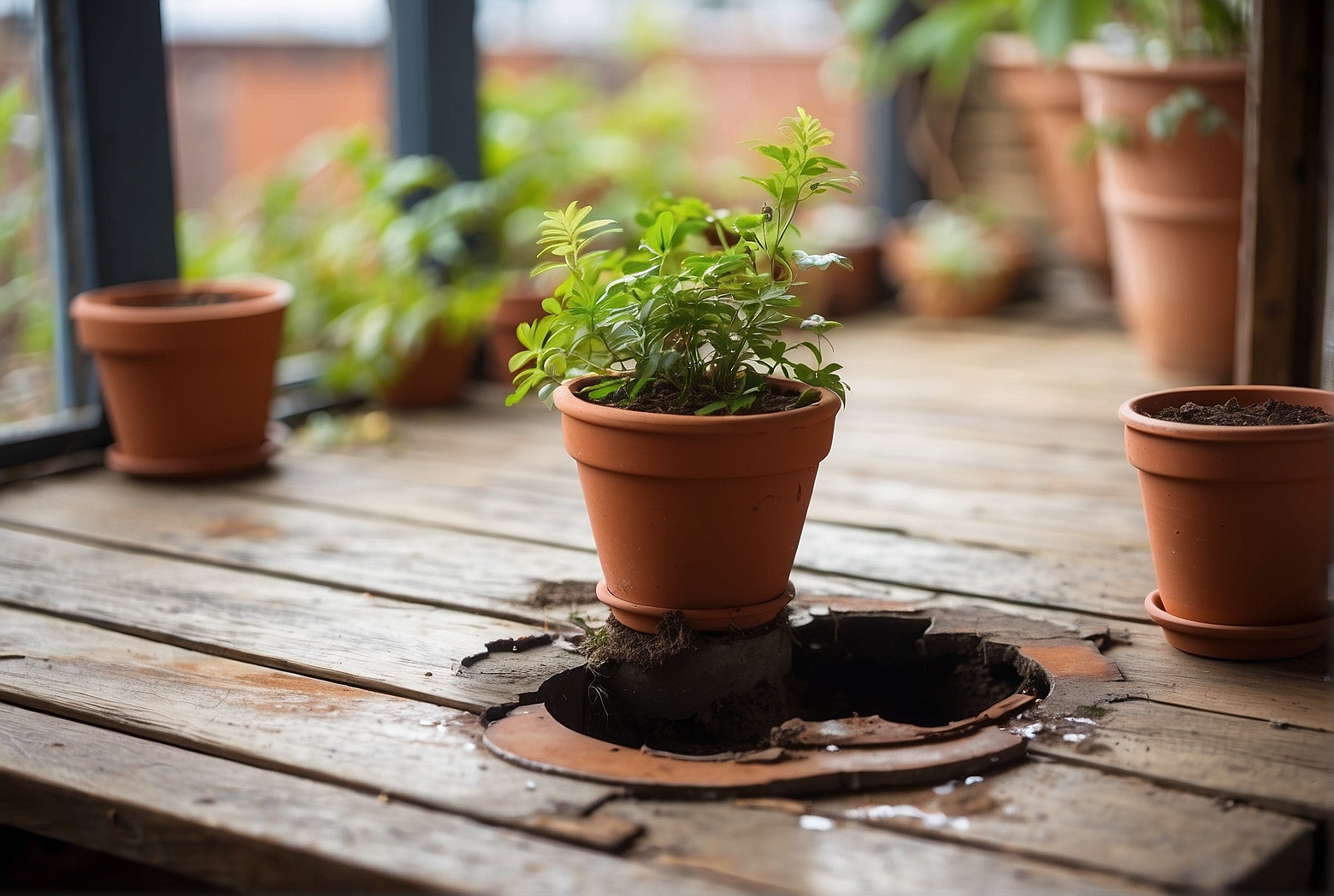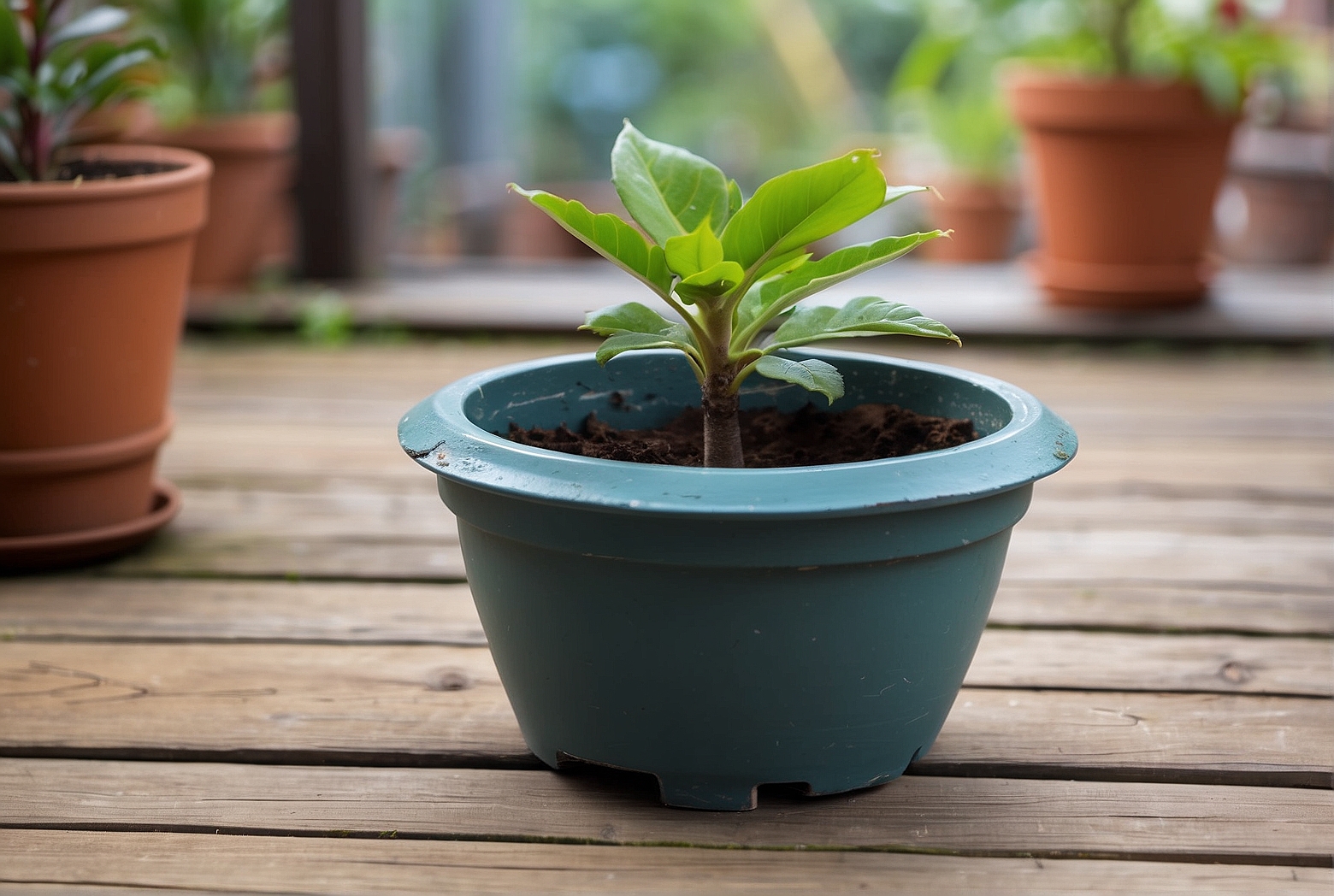do potted plants need a hole in the bottom
? This is a common question among gardeners and plant enthusiasts. The answer is yes, potted plants need a hole in the bottom of the pot to allow for proper drainage and aeration. This is important for the health of the plant and its root system. In this article, we will discuss why potted plants need a hole in the bottom, how to create one, and the benefits of proper drainage and aeration. We will also discuss some tips for keeping your potted plants healthy and thriving.
How to Determine if Your Potted Plant Needs a Hole in the Bottom
If you have recently purchased a potted plant, it is important to determine whether or not it needs a hole in the bottom. This is because a hole in the bottom of the pot will allow excess water to drain out, preventing the roots of the plant from becoming waterlogged. To determine if your potted plant needs a hole in the bottom, consider the following:
1. The type of plant: Different types of plants require different levels of water. For example, succulents and cacti require very little water, while other plants such as ferns and ivy require more. If your plant requires more water, it is likely that it will need a hole in the bottom of the pot.
2. The size of the pot: If the pot is too small, it may not be able to hold enough water for the plant. In this case, a hole in the bottom of the pot will allow excess water to drain out, preventing the roots from becoming waterlogged.
3. The material of the pot: If the pot is made of a material that does not allow water to drain out, such as plastic or ceramic, then it is likely that a hole in the bottom of the pot will be necessary.
By considering the type of plant, the size of the pot, and the material of the pot, you can determine whether or not your potted plant needs a hole in the bottom. If you are unsure, it is best to consult a professional to ensure that your plant is receiving the proper care.
The Benefits of Having a Hole in the Bottom of Your Potted Plant
Having a hole in the bottom of a potted plant can provide numerous benefits to the health and longevity of the plant. This is because the hole allows for proper drainage of excess water, which can help to prevent root rot and other issues caused by overwatering. Additionally, the hole can help to ensure that the soil in the pot does not become overly compacted, which can impede the growth of the plant.
The hole in the bottom of the pot also allows for air to circulate around the roots of the plant, which is essential for healthy root growth. This is because the air helps to keep the soil aerated, which is necessary for the plant to absorb the nutrients it needs to thrive. Furthermore, the air circulation can help to prevent the buildup of mold and mildew, which can be detrimental to the health of the plant.
Finally, having a hole in the bottom of the pot can help to ensure that the plant is not overwatered. This is because the excess water can easily escape through the hole, which prevents it from sitting in the soil and potentially damaging the roots. Additionally, the hole can help to ensure that the soil does not become overly saturated, which can lead to root rot and other issues.
In conclusion, having a hole in the bottom of a potted plant can provide numerous benefits to the health and longevity of the plant. This is because the hole allows for proper drainage of excess water, helps to ensure that the soil is not overly compacted, and allows for air to circulate around the roots. Additionally, the hole can help to prevent the plant from becoming overwatered, which can be detrimental to its health.
Troubleshooting Common Problems with Potted Plants Without a Hole in the Bottom
Potted plants without a hole in the bottom can be a challenge to maintain. Without proper drainage, the soil can become waterlogged, leading to root rot and other problems. Fortunately, there are several steps you can take to troubleshoot common problems with potted plants without a hole in the bottom.
The first step is to check the soil. If the soil is too wet, it may be a sign of overwatering. To remedy this, allow the soil to dry out before watering again. If the soil is too dry, it may be a sign of underwatering. To remedy this, water the plant more frequently.
The second step is to check the potting mix. If the potting mix is too dense, it may be preventing water from draining properly. To remedy this, add a layer of gravel or perlite to the bottom of the pot to improve drainage.
The third step is to check the roots. If the roots are brown or mushy, it may be a sign of root rot. To remedy this, remove the plant from the pot and inspect the roots. If the roots are damaged, trim them off and repot the plant in fresh potting mix.
Finally, check the environment. If the plant is in a location that is too hot or too cold, it may be struggling to survive. To remedy this, move the plant to a location that is more suitable for its needs.
By following these steps, you can troubleshoot common problems with potted plants without a hole in the bottom. With proper care and attention, your plant should thrive and bring you joy for many years to come.

Q&A
1. do potted plants need a hole in the bottom?
Yes, potted plants need a hole in the bottom of the pot to allow for proper drainage. Without a hole, the soil can become waterlogged and the roots of the plant can rot.
2. What size hole should be in the bottom of the pot?
The size of the hole should be proportional to the size of the pot. Generally, a pot with a diameter of 8 inches or less should have a hole that is 1/2 inch in diameter. For pots larger than 8 inches, the hole should be 1 inch in diameter.
3. What should be placed in the bottom of the pot before planting?
Before planting, it is important to place a layer of gravel or small stones in the bottom of the pot. This will help to ensure proper drainage and prevent the soil from clogging the hole. Additionally, it is a good idea to place a piece of mesh or screen over the hole to prevent soil from washing out.
Conclusion
In conclusion, potted plants do need a hole in the bottom of the pot in order to ensure proper drainage and aeration. Without a hole in the bottom of the pot, the plant’s roots can become waterlogged, leading to root rot and other issues. Additionally, the hole in the bottom of the pot allows excess water to drain away, preventing the soil from becoming overly saturated. Therefore, it is important to make sure that all potted plants have a hole in the bottom of the pot.

